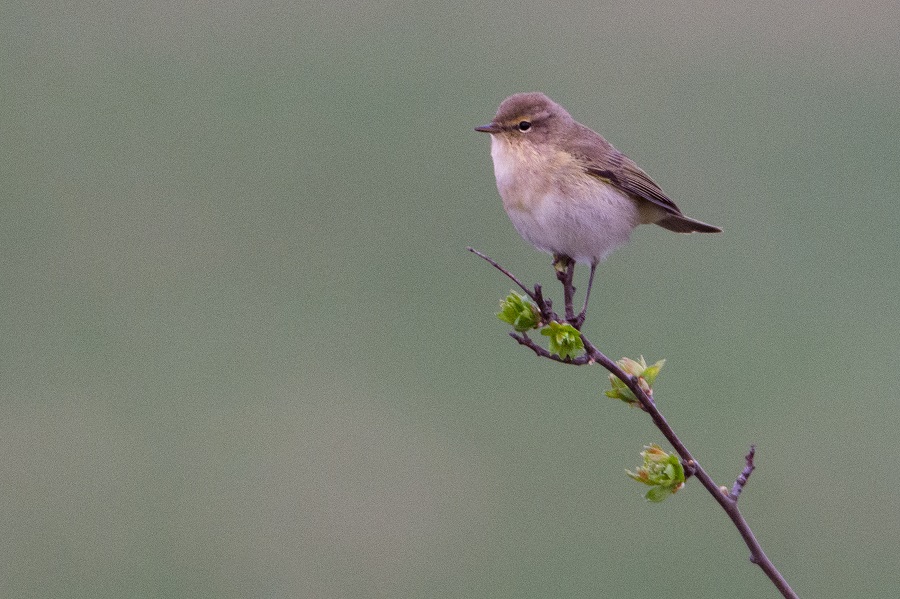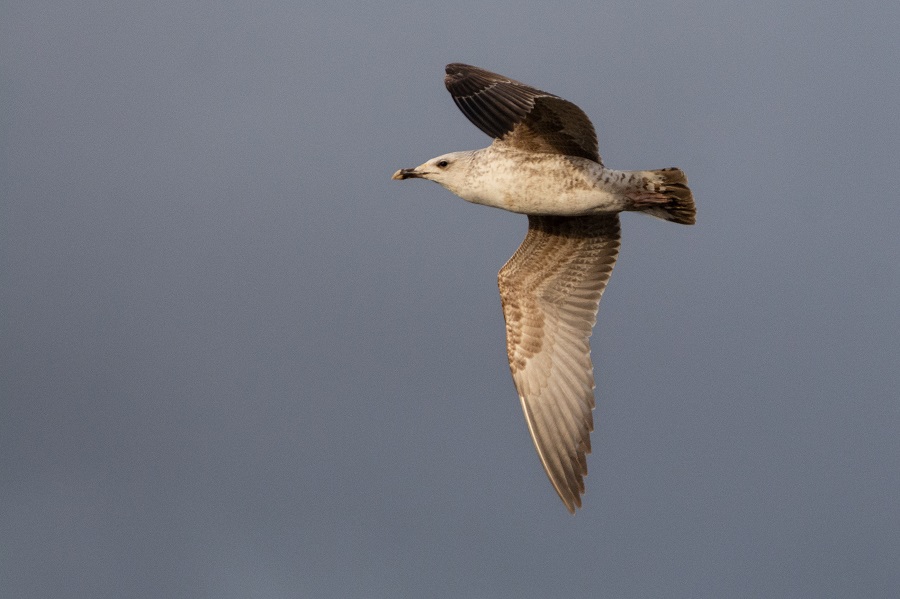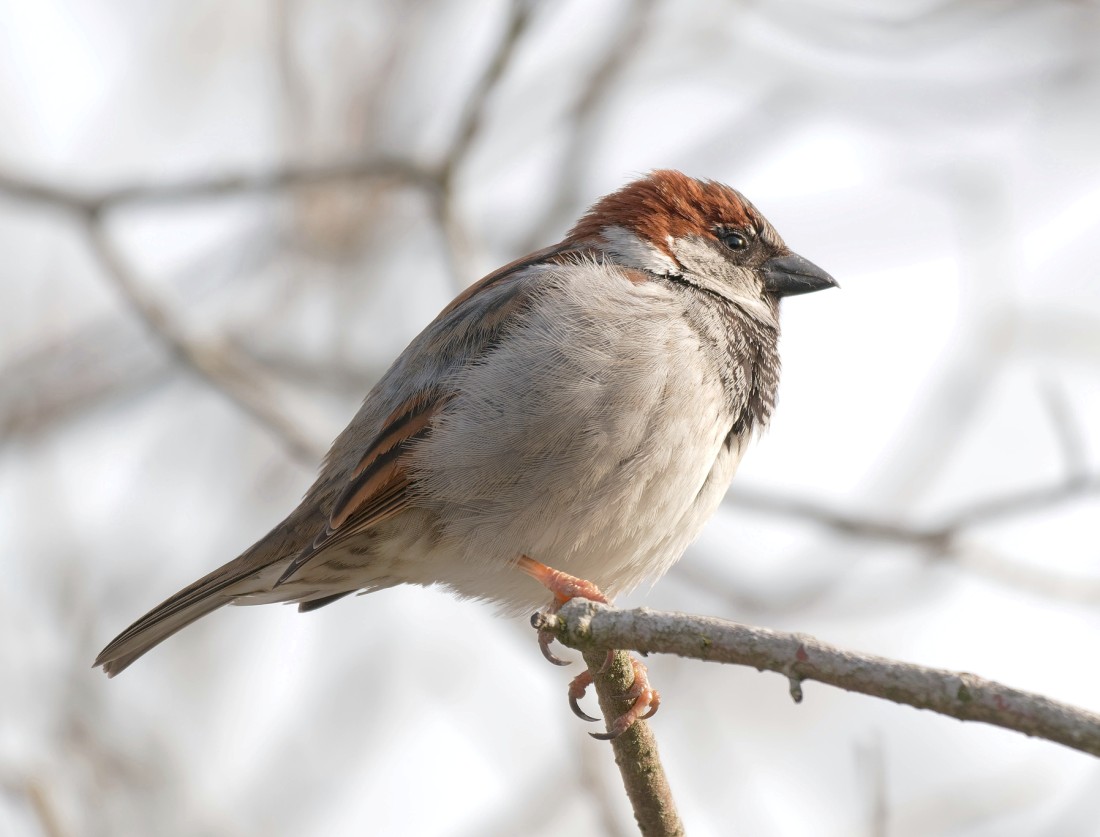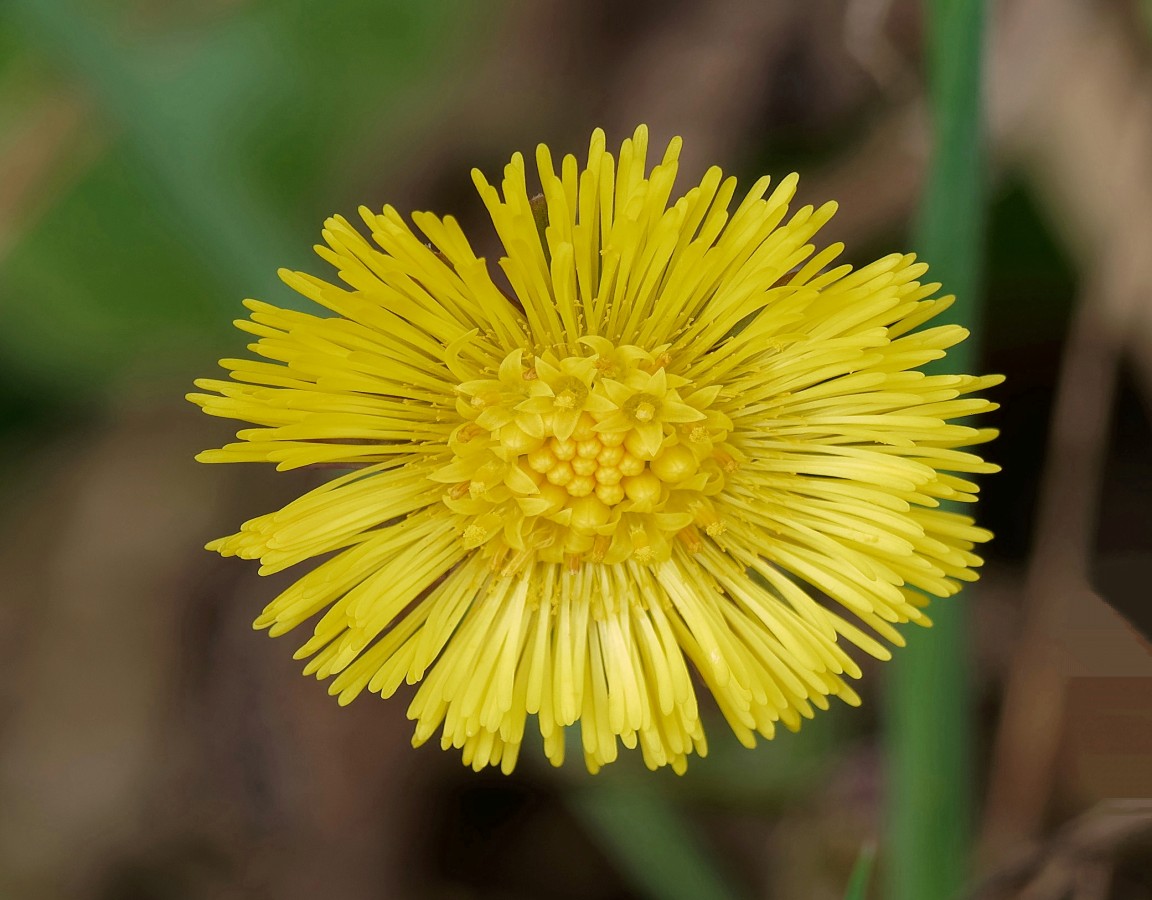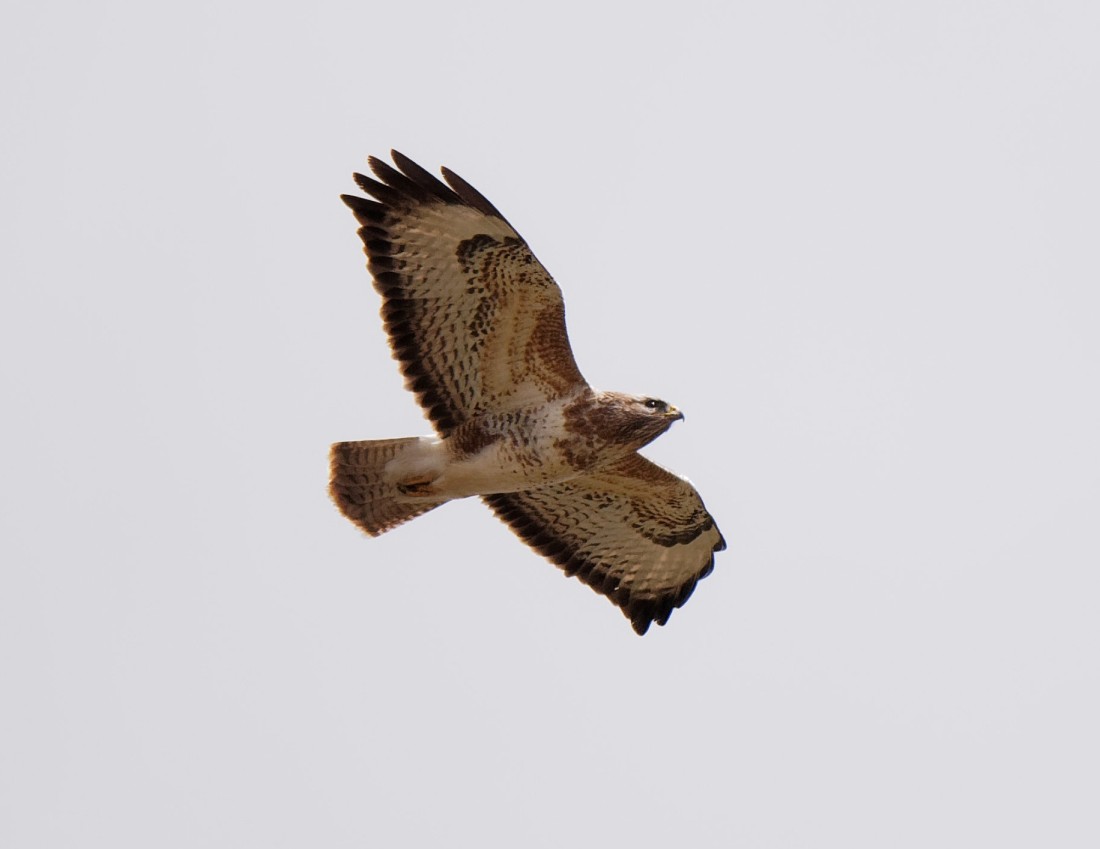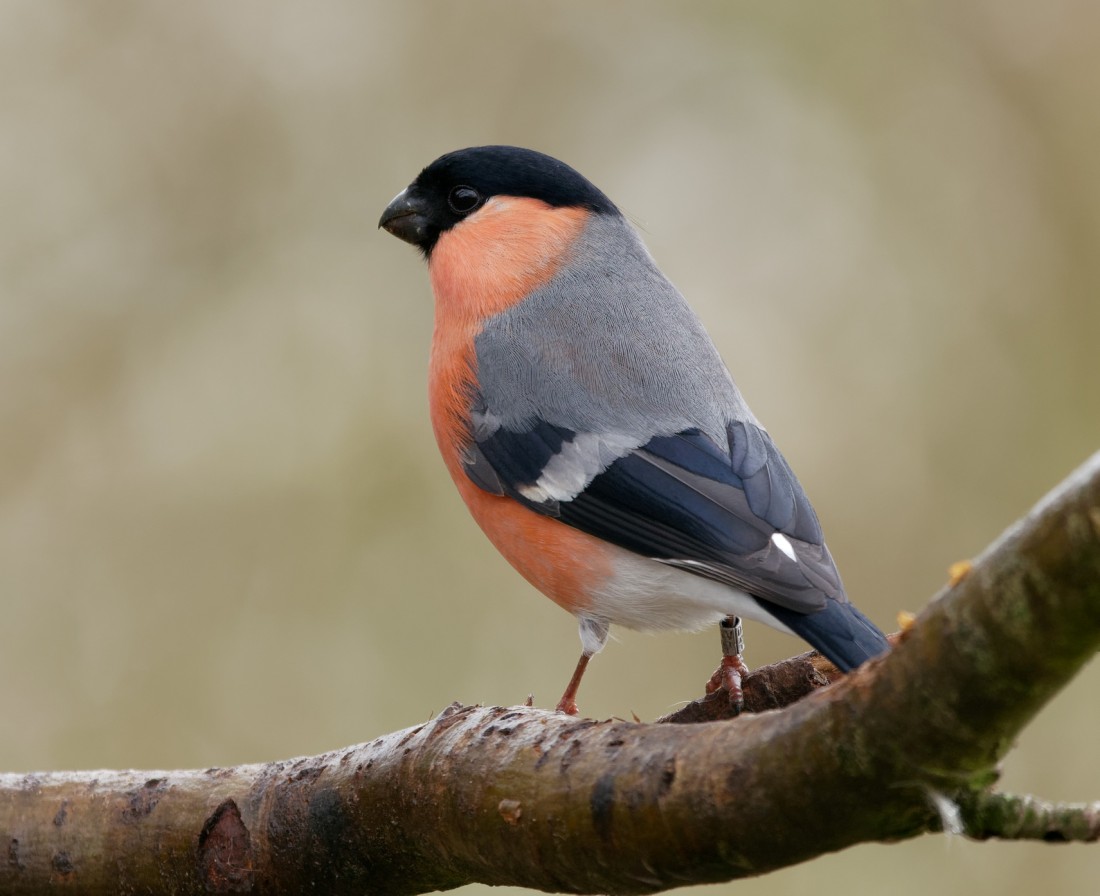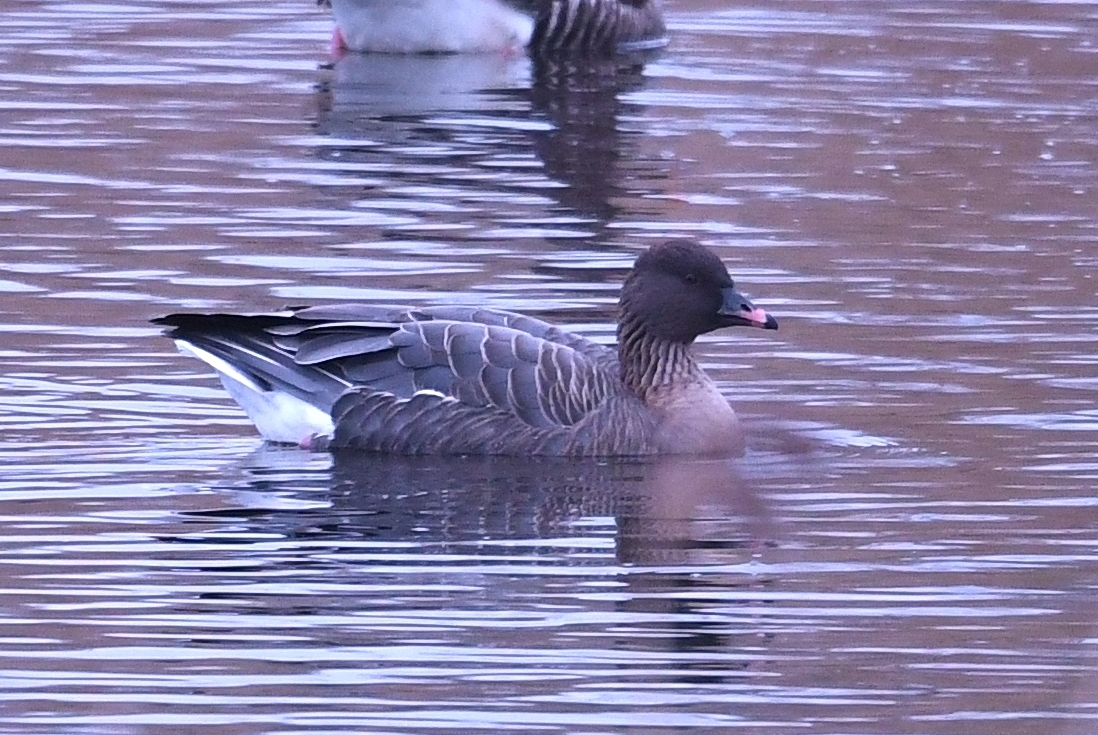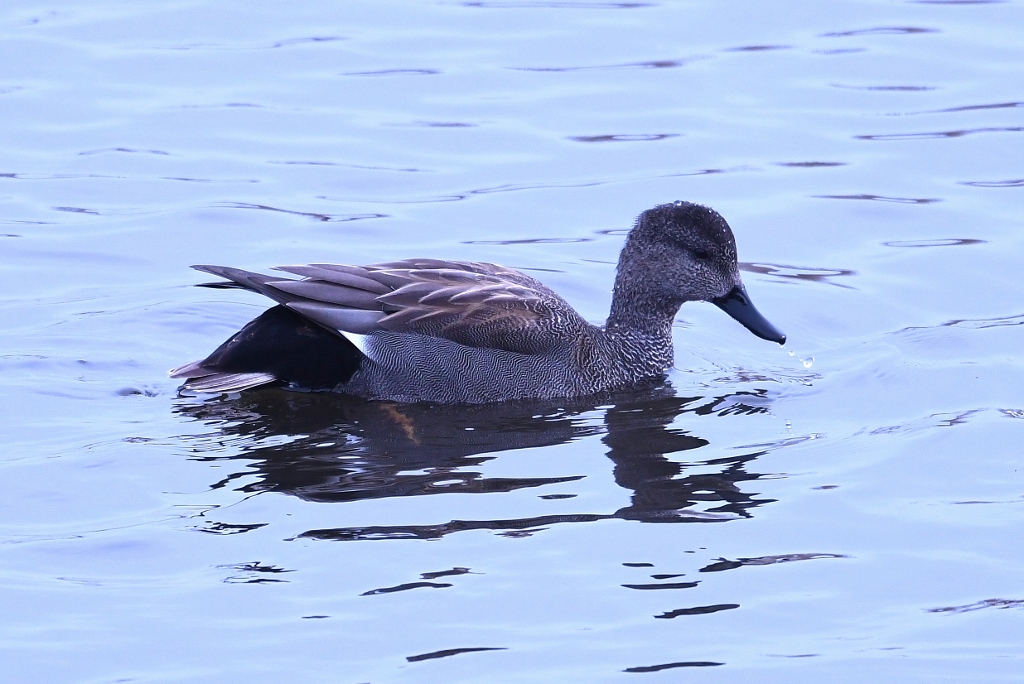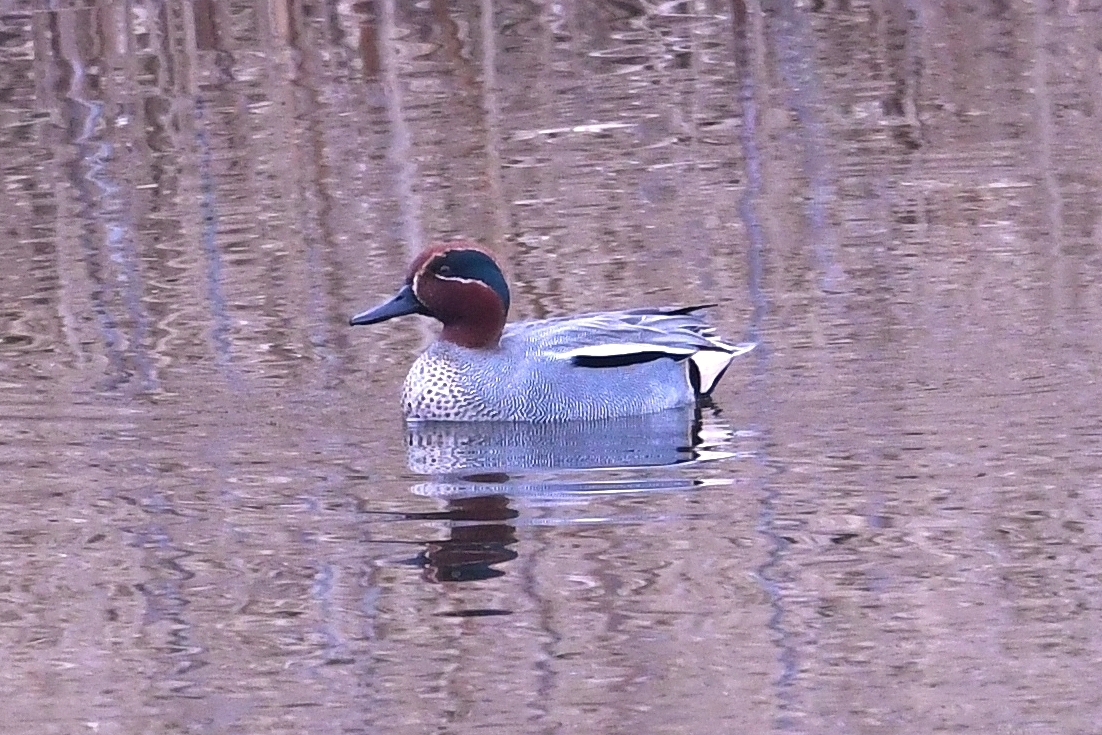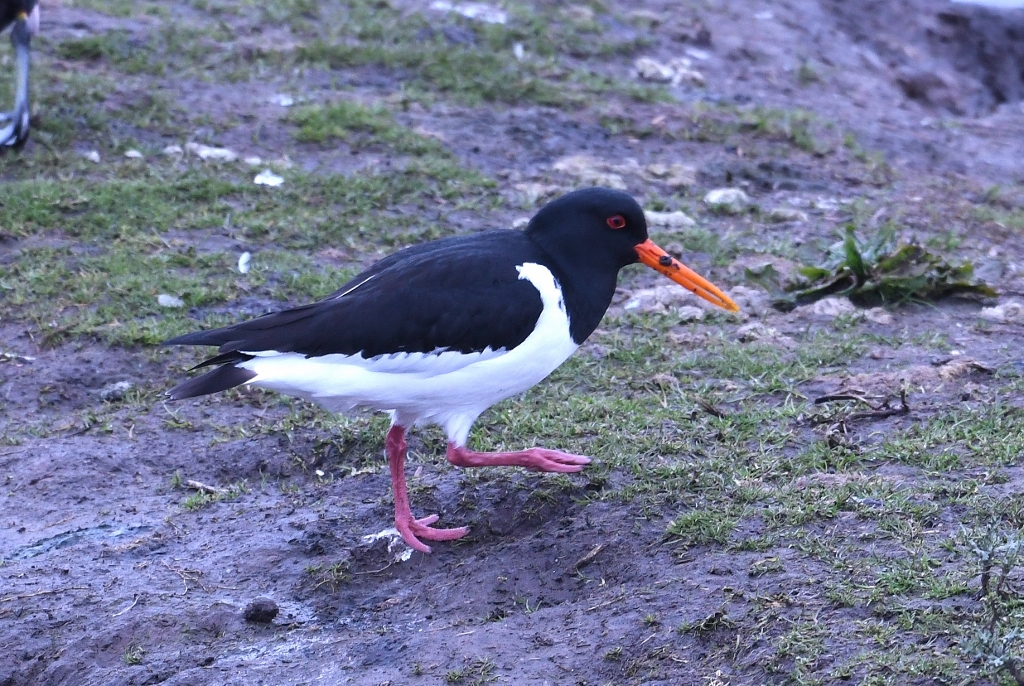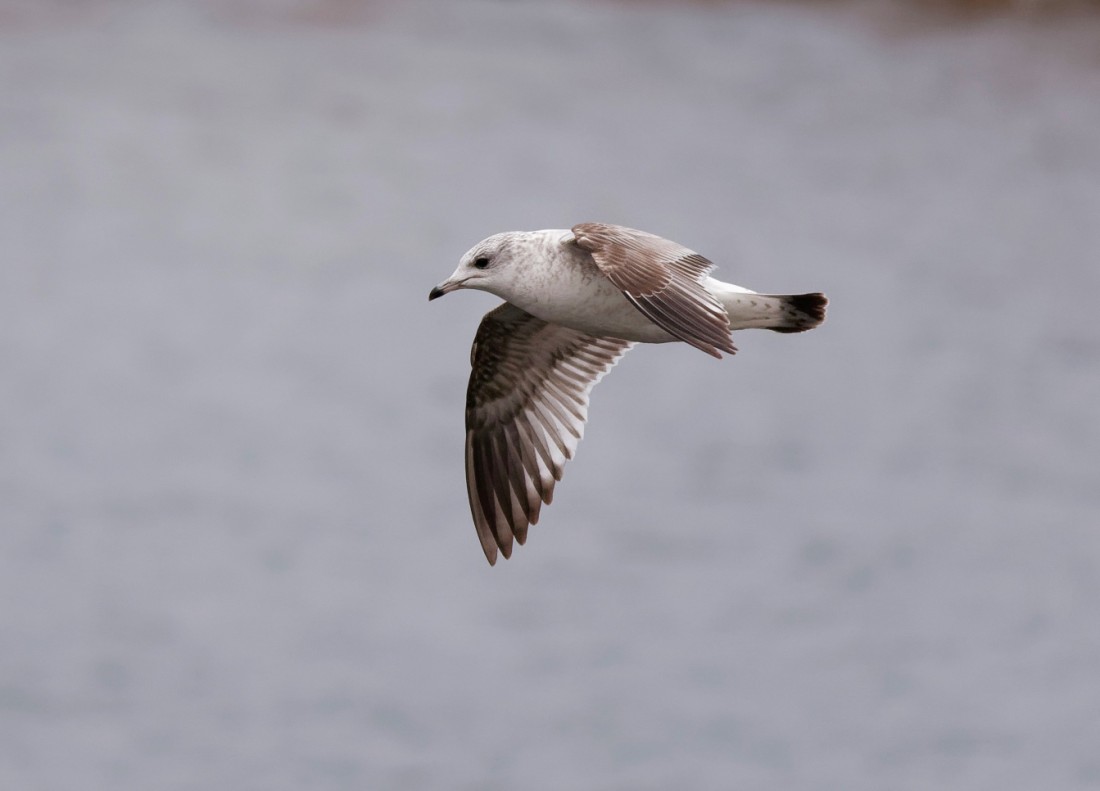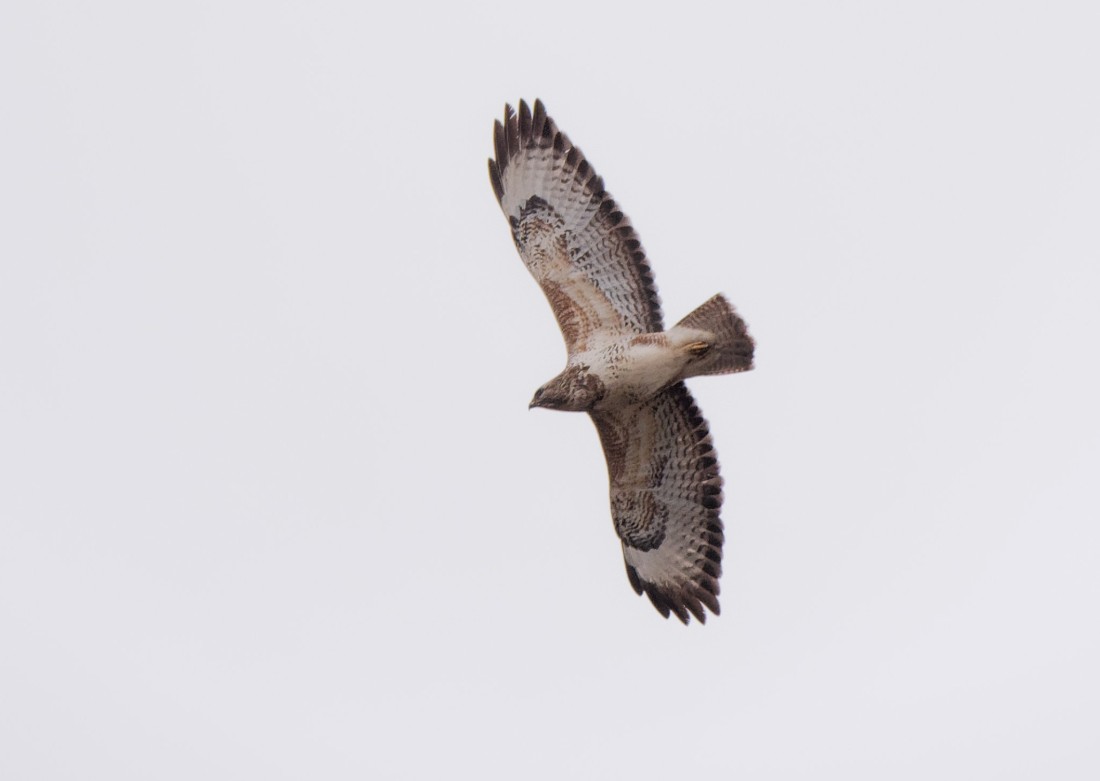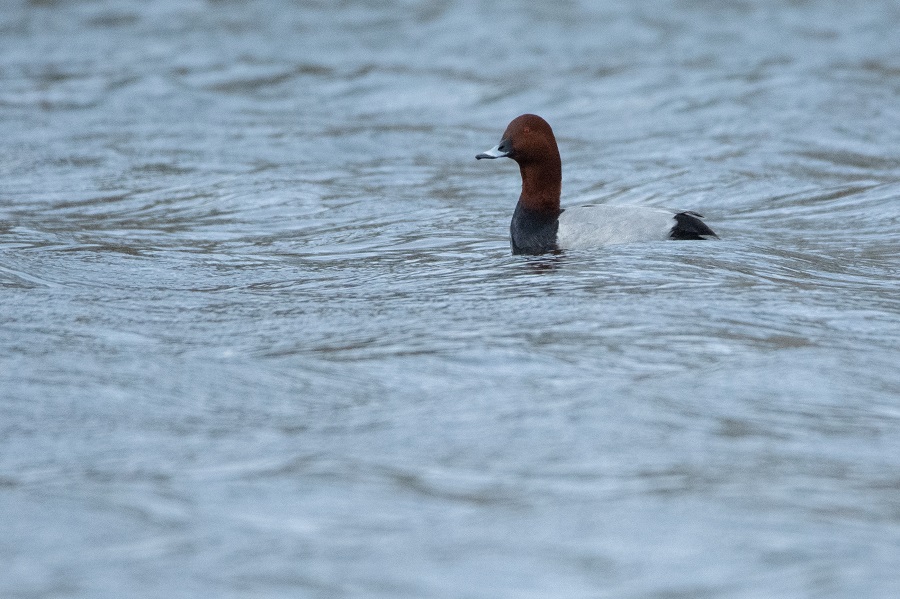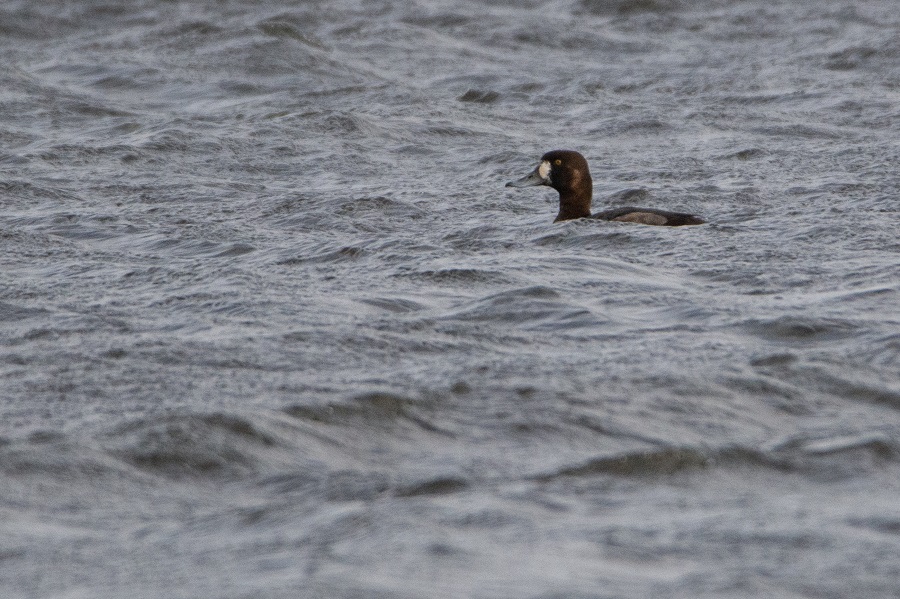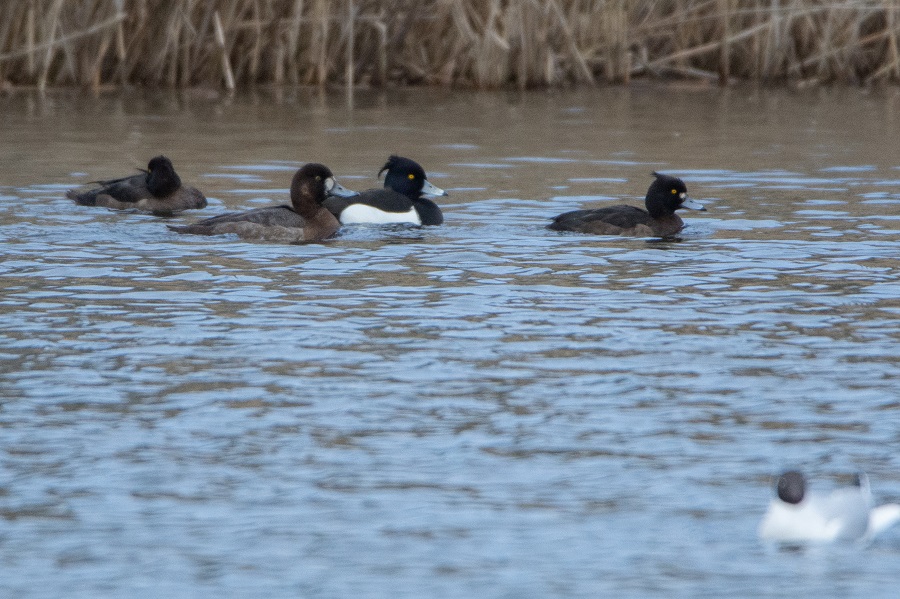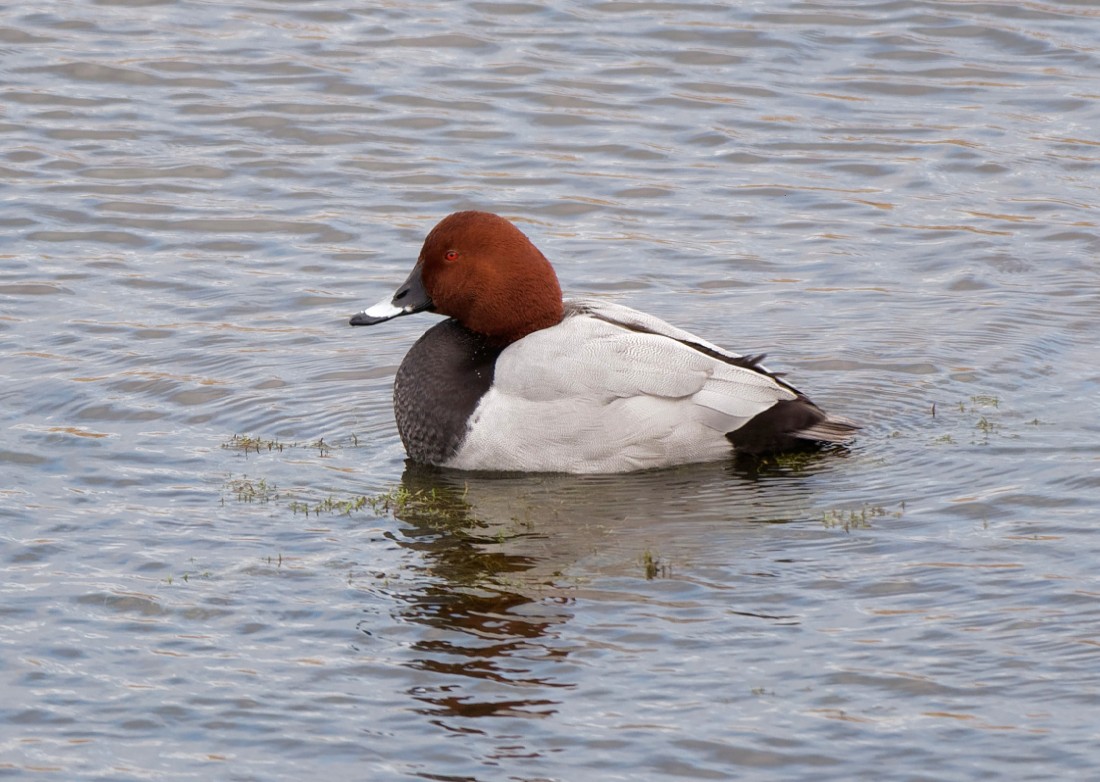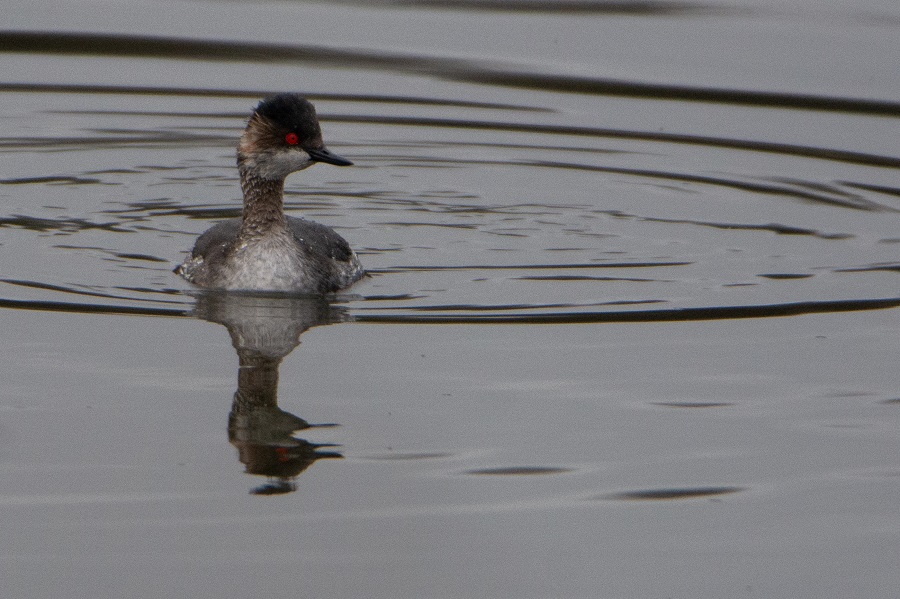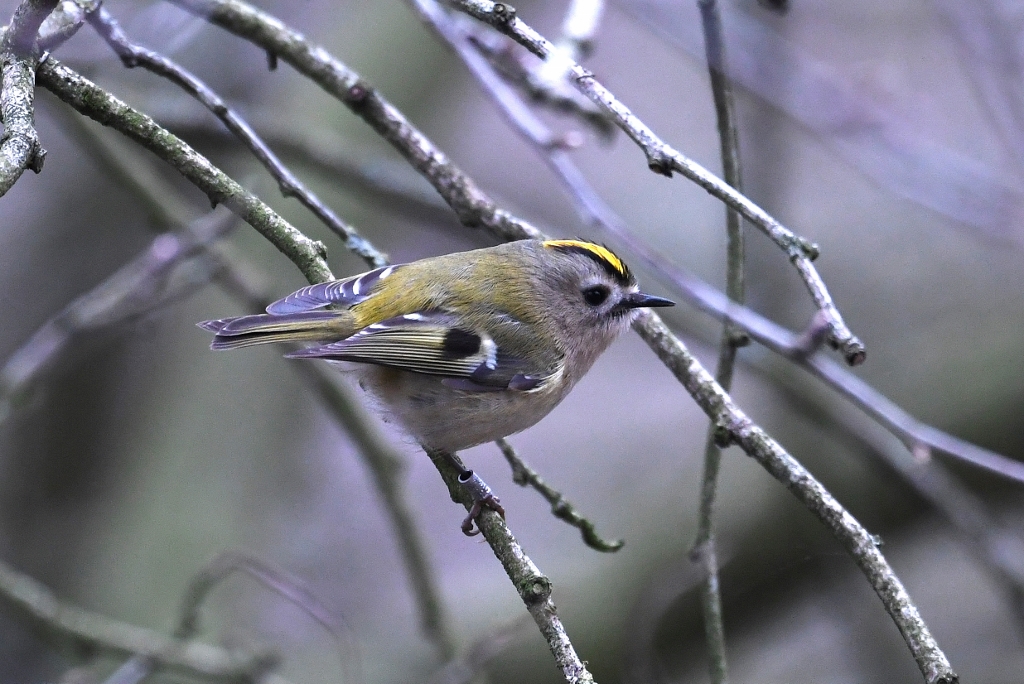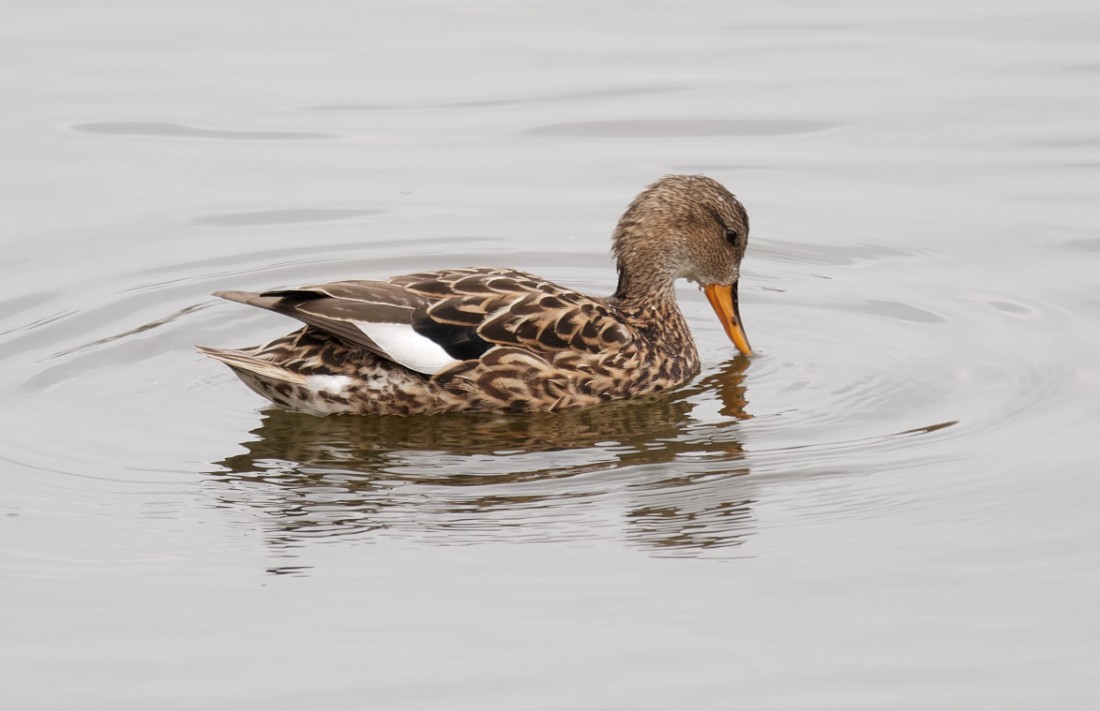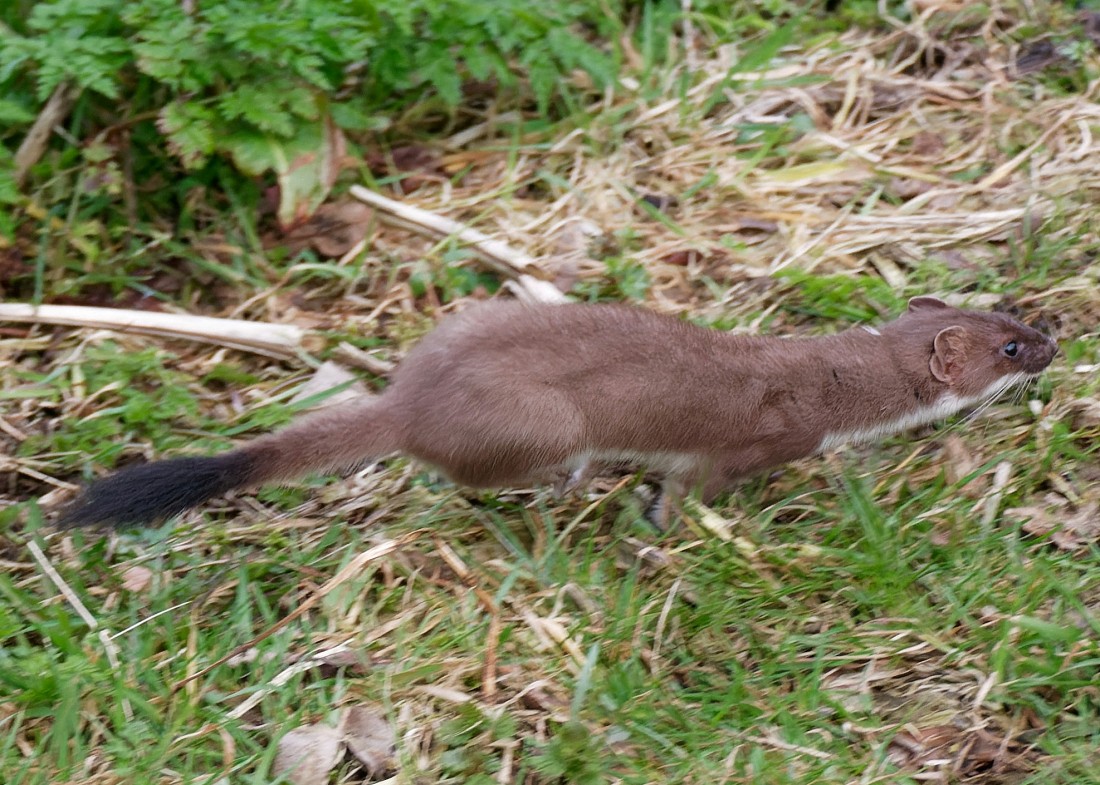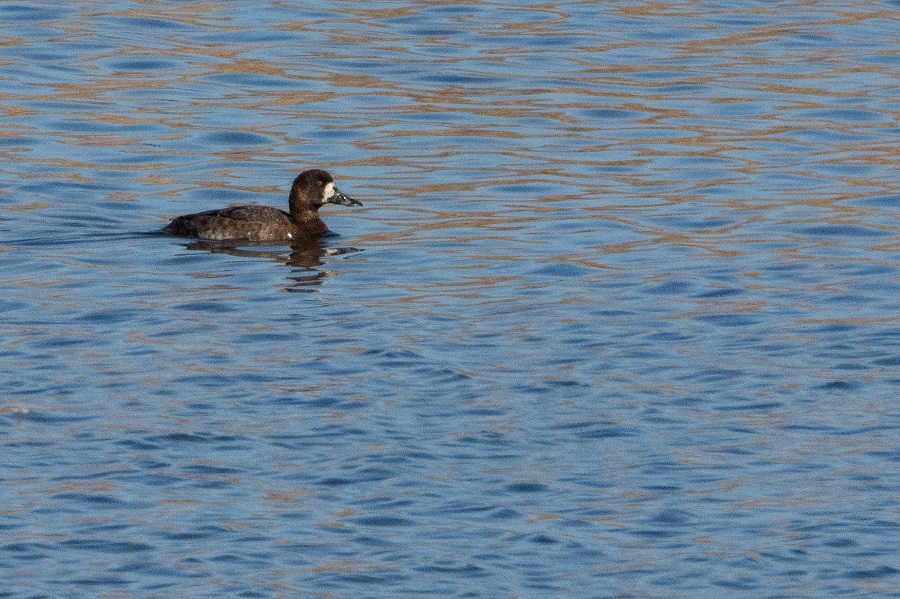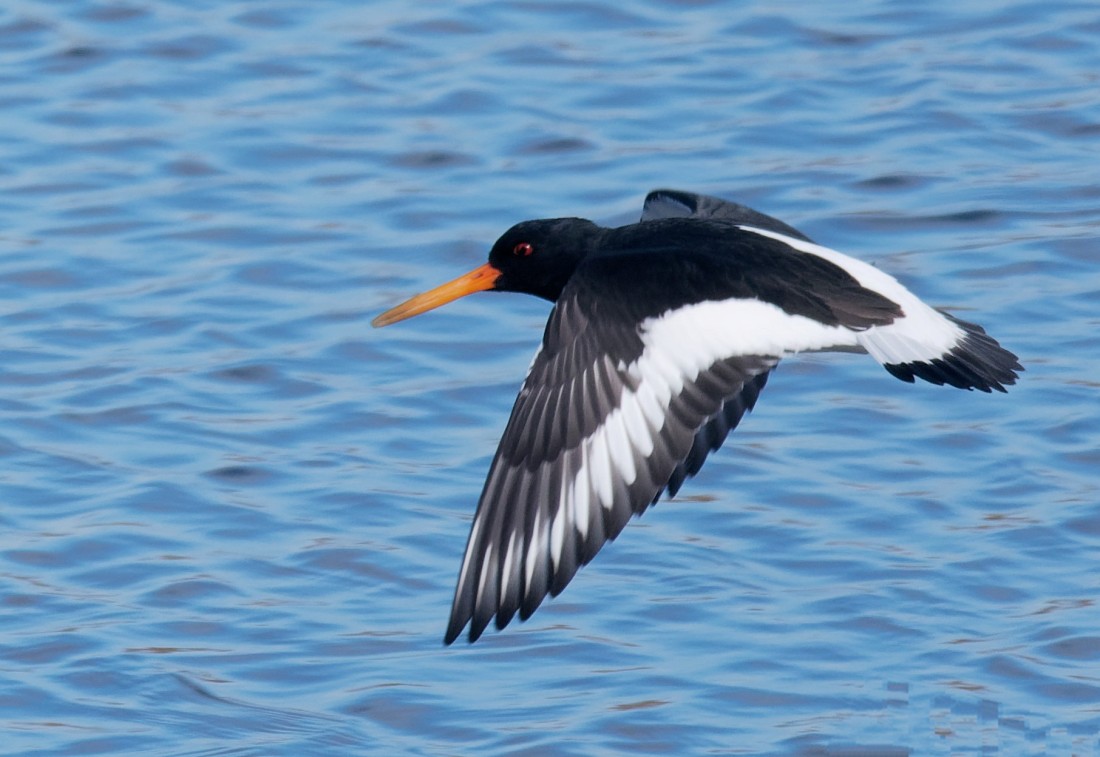Woolston Eyes Monthly Sightings
2021-03-31
Chiffchaff - one of 116 counted across three of the four beds on 31 March
Submitted by: Daniel Owen
2021-03-30
Two Blackcaps were in song as I walked on to No.3 bed with 10 Black-necked Grebes interacting in front of the Morgan Hide, while three Bramblings were underneath the feeders. The long-staying female Scaup was again out on the lagoon. A flurry of wader activity followed, with a Greenshank, 3 Redshanks and 2 Oystercatchers flying west in quick succession. Just one Sand Martin was noted heading north, presumably with the main passage being at height. I then headed for No.4 bed for a short contractors meeting, recording another Blackcap, my first Willow Warbler of the year and 2 Little Ringed Plovers, while 2 Dunlin and best of all, a north-bound Osprey were reported by permit holders. Photo of a male House Sparrow Cheers David Bowman
Submitted by: David Bowman
2021-03-30
No1 Bed - 2 Willow Warbler, Green Woodpecker, 20 Chiffchaff, Goldcrest, Cetti’s Warbler, Kingfisher, 3 Sand Martin, 2 Blackcap, 5 Meadow Pipit, 7 Lesser Redpoll, 8 Buzzards, Raven, Sparrowhawk, 4 Grey Heron, 3 Linnet, 3 Water Rail
Submitted by: John Blundell
2021-03-27
Last night’s waxing, gibbous moon provided ideal conditions for the arrival of more nocturnally migrating Black-necked Grebes. An early, co-ordinated count produced a total of 15, which is excellent as our peak numbers don’t usually arrive till mid-April. Just 5 Sand Martins passed through and a single male Blackcap was in song early on. The two adult Mediterranean Gulls which have been around for the past couple of weeks also put in an appearance and we remain ever hopeful that they will stay and breed. The eastern end of the Reserve provided some more nice sightings, with 2 Jack Snipe, 1 Ringed Plover and 2 Little Ringed Plovers, along with the resident pair of Peregrines undertaking a food pass at the nest site. The female showed every indication of being on eggs and by mid-May we’ll be on the look out for the hatching of the young. Other sightings of note were: a male Brambling displaying outside the Morgan Hide (no doubt practicing for an imminent return to its Scandinavian breeding grounds) and 15 Chiffchaffs in song. Photo of a Coltsfoot Cheers David Bowman (with Helen Wynn and Dave Steel)
Submitted by: David Bowman
2021-03-24
Interesting that the BNG no. dropped from 11 on 23/3 to 7 on the 25/3. On the 24th I photographed 4 BNG all feeding together On the big lake below Acre Nook silt pond on Lapwing lane at Chelford. 3 in full breeding plumage, 1 in partial winter plumage. Note ! not on Lapwing Hall Pool.
Submitted by: David Collis
2021-03-25
The 11 Black-necked Grebes from Tuesday had reduced to 7, which is typical as they tend to go wandering round adjacent waters before finally returning to breed. A single Redshank then dropped onto No.3 bed, a skein of 85 Pink-footed Geese headed north-west and just one Sand Martin passed through, compared with the 420 from Tuesday. On No.4 bed, a pair of Pintail were looking settled, 6 pairs of Lapwings were displaying and two Ringed Plovers called in briefly before being disturbed by a hunting Peregrine. Other sightings of note around the wetland included: 14 Chiffchaffs, 7 Lesser Redpolls, 60 Linnets and 5 Meadow Pipits. In addition, a few butterflies were on the wing as the day warmed: 1 Brimstone, 5 Peacocks and 2 Small Tortoiseshells. Photo of a Common Buzzard Cheers David Bowman (with Dave Steel)
Submitted by: David Bowman
2021-03-23
There is always some anticipation in early spring, when persistent northerly winds swing to the south and the first real flood of migration begins. The first evidence, soon after dawn, was of an increase in the number of Black-necked Grebes, with 11 in total on No.3 bed. Odd Sand Martins then began to arrive, before the floodgates really opened. Walking onto No.4 bed, 45 more Sand Martins were feeding low overhead, bringing with them our earliest ever House Martin, while a pair of Oystercatchers were on one of the breeding islands, along with 6 pairs of Lapwing. Back on No.3 bed by 11.00 am, a steady stream of Sand Martins started pouring through. By 3.30 pm the day’s total had reached 420, with a single Swallow picked out among them. Two Mediterranean Gulls and 2 Black-tailed Godwits then arrived and 3 Bramblings were under the Morgan Hide feeders, before a Marsh Harrier put in a brief appearance before sliding off to the west,. Most intriguingly, a Common Buzzard flew south, showing a white wing tag on its right wing. There is a German scheme using white wing tags on Buzzards, though, as it was too far away to read the tag number, we may never learn its origin. Photo of a Sand Martin Cheers David Bowman (with Sue Haddock and Mike Michael Miles)
Submitted by: David Bowman
2021-03-21
The link is to a short video, showing: Grey Wagtail, Black-necked Grebes and Mediterranean Gulls on the new No.4 bed wetland and then, on No.3 bed, Great Spotted Woodpecker, Carrion Crow, Cormorant, Oystercatchers, battling drake Mallards, a hunting Sparrowhawk, Great Crested Grebes at the nest, interaction between recently arrived Black-necked Grebes and a long-staying female Scaup. To view David’s video CLICK HERE…. or simply copy the following link into your browser. https://youtu.be/W7bjLi2FVxw Cheers David
Submitted by: David Bowman
2021-03-20
These light but persistent north-westerlies are holding migration back at the moment, though we still managed to find a few birds which had struggled through. Most pleasing was the increase in Black-necked Grebe numbers, with 8 on No.3 bed and another on the new No.4 bed wetland. Other sightings of note included: 2 Mediterranean Gulls, 1 Sand Martin, 2 Curlews, 1 Oystercatcher, 1 Raven, 1 Kingfisher, 1 Water Rail and 5 Cetti’s Warblers. Photo of an Oystercatcher Cheers David Bowman (with Helen Wynn and Dave Steel)
Submitted by: David Bowman
2021-03-18
A murky morning, with overcast skies, a ground mist and a freshening north-westerly breeze, promised little in terms of migration. Nevertheless, we found some odds and ends, as well as getting some decent counts along the way. At first light on No.3 bed, a female Stonechat was bobbing about in front of the Morgan Hide, while 13 Black-tailed Godwits slid through the mist and away to the west. Our Black-necked Grebes have been moving between the regular breeding colony on No.3 bed and the No.4 bed wetland. This morning found just four, all on No.3 bed, along with a pair of Pintail, the long-staying female Scaup and a passing Oystercatcher. Other counts between the two beds included: 1 Brambling, 13 Chiffchaffs, 3 Siskins, 11 Lesser Redpolls, 5 Cetti’s Warblers, 1 Water Rail and 520 Black-headed Gulls. Photo of a male Bullfinch Cheers David Bowman (with Daniel Owen)
Submitted by: David Bowman
2021-03-17
First on no. 3 bed. Only distant sighting of a BNG. A lone Pink-footed Goose with 2 Greylags. Reasonable images of Teal, Gadwall, Pinkfoot and Oystercatcher on the scrape.
Submitted by: David Collis
2021-03-16
An enjoyable morning, split between No.3 bed and the new No.4 bed wetland. Highlight was definitely the 6 Black-necked Grebes, with the 3 from No.4 bed having relocated to the regular breeding colony on No.3 bed and being joined by 3 new arrivals. Early on, Daniel Owen counted 19 Common Gulls roosting on No.4 bed and we had another three on No.3 bed, which is probably a record count for us. A Water Rail then showed well in front of the Morgan Hide and 260 Black-headed Gulls were milling around, calling, displaying and mating. When the light drizzle cleared I went on to No.4 bed, where a single Sand Martin struggled north into the wind and a Jack Snipe flushed from the water margin. Other noteworthy counts included: 150 Linnets, 10 Lapwings, 1 Great Black-backed Gull, 12 Lesser Black-backed Gulls, 120 Black-headed Gulls, 40 Gadwall, 25 Coot, 20 Teal, 15 Pied Wagtails and 2 Grey Wagtails Photo of a Common Gull. Cheers David Bowman (with Daniel Owen)
Submitted by: David Bowman
2021-03-14
WeBS Count 13th March 2021
Little Grebe 14, Great Crested Grebe 9, Black-necked Grebe 4, Cormorant 12, Mute Swan 29, Grey Heron 5, Shelduck 8,Greylag Goose 2, Canada Goose 50, Gadwall 68, Teal 46, Mallard 97, Shoveler, 67, Pochard 81, Tufted Duck 251, Scaup 1, Goldeneye 3,
Goosander 2, Mandarin 2, Water Rail 1, Moorhen 12, Coot 77,
Oystercatcher 2, Lapwing 10, Jack
Snipe 1, Snipe 33, Black-headed Gull 328, Common Gull 6, LBB Gull 7,Herring Gull 5, Kittiwake 1
Submitted by: Brian Martin
2021-03-13
After a rain-swept dawn we set off to complete the monthly Wetland Bird Survey (WeBS), focussing on No.4 bed. The weather, though still blustery, slowly moved to blue skies. Out on the new wetland 3 Black-necked Grebes, an adult Mediterranean Gull, a pair of Oystercatchers and 4 pairs of Lapwing were the highlights. The 320 Black-headed Gulls, with many perched on the breeding islands, raise hopes that they will establish a second breeding colony here, which is a prerequisite for a breeding colony of Black-necked Grebes. The grebes benefit from the anti-predator mobbing behaviour of the gulls and thus breed more successfully. Other birds of note here included: 1 Jack Snipe, 33 Snipe, 9 Chiffchaffs, 1 Water Rail, 80 Linnets, 95 Redwings, 5 Lesser Redpolls and 2 Goosanders (on the river). On the long-established Loop wetland 2 more pairs of Lapwing looked settled, while 2 Sand Martins flew through. Back on No.3 bed for the remainder of the morning, a wind-blown adult Kittiwake, a fourth Black-necked Grebe and a second Mediterranean Gull were the pick of the bunch. Photo of a Common Buzzard Cheers David Bowman, Brian Martin, Helen Wynn, Dave Steel and Daniel Owen.
Submitted by: David Bowman
2021-03-11
The 1st-winter female Scaup showed well among the Tufted Duck flock for a period early afternoon
Submitted by: Daniel Owen
2021-03-11
A blustery morning, with gusting westerlies, at Woolston Eyes produced a nice surprise to cap a rewarding day. The highlight of a walk round the new No.4 bed wetland was the three Black-necked Grebes, which are still looking settled. It was also good to see 6 pairs of Lapwings looking settled and starting to display and our first Redshank for the wetland. We’ve now had ten species of wader recorded, so far in March, which is good. The five islands already completed offer a significant increase in potential nesting area for waders and gulls (maybe even terns), so it was pleasing that 125 Black-headed Gulls and 7 Common Gulls were still present. While we’re hopeful that the former will stay to establish another colony, the latter will soon be heading north/north-east to breed. Back on No.3 bed, the long-staying female Scaup put in an appearance but the best, as so often, came last. A small, short-tailed lark passed over, heading due south, showing the distinctive profile of a Woodlark. Photo of a drake Pochard. Cheers David
Submitted by: David Bowman
2021-03-09
As I was walking onto the new No.4 bed wetland, for a review meeting with our contractor, the sun was rising in spectacular fashion. Calling Redwings drew my attention to 135 of these smart Scandinavian thrushes leaving an overnight roost, along with a handful of Fieldfares. After a good meeting I bumped into Daniel Owen and we managed to find three Black-necked Grebes and five Curlews on the new wetland. I then headed for No.3 bed, where two Ringed Plovers flew through, while Dan found two adult Mediterranean Gulls and 10 Black-tailed Godwits, with the former later flying in to No.3 bed, along with two Oystercatchers. To keep the variety going, the female Scaup which has been around for a while, then dropped in with a flock of Pochard and was feeding actively in front of the Morgan Hide. With the day warming, raptors were much in evidence, with 2 Kestrels, 3 Sparrowhawks and 9 Buzzards in the air, though they were capped by the juvenile male Peregrine which stooped, unsuccessfully, to try and catch a Tufted Duck. Photo of sunrise over the No.4 bed wetland Cheers David Bowman (with Daniel Owen)
Submitted by: David Bowman
2021-03-06
Goldcrest. Seen by the feeding station at the Sibble Hog hide.
Submitted by: David Collis
2021-03-06
Another beautiful early spring morning on No.3 bed at Woolston Eyes, with the light southerly breeze gradually breaking up the cloud cover as the day warmed. A pair of Black-necked Grebes were initially in front of the Morgan Hide, though they were very mobile, sailing around the bed exploring the reed beds for a suitable nest site. These early-returning birds settle down to nesting pretty rapidly, so that, if the weather is kind, they can produce two broods before leaving in late July. We couldn’t locate the single grebe, which was present on Thursday, which we presume has moved off, at least temporarily. This is the time of year when the first spring migrants cross paths with our winter visitors and the single Woodcock, 15 Redwings and 2 Wigeon we noted will soon be thinking of heading back to their breeding grounds. Other reports of note included a Redshank, three Lesser Repolls and from the new No.4 bed wetland, 15 Snipe and two trilling Little Grebes. Photo of a female Gadwall Cheers David Bowman (with Helen Wynn and Dave Steel)
Submitted by: David Bowman
2021-03-05
Here’s a link to a short video showing some of the action on the Reserve recently. It shows: Shelduck, displaying Canada Geese, male and female Tufted Ducks, male and female Gadwalls, male Mallards trying to mate with the same female, male and female Goldeneyes, a female Scaup, a drake Pintail, a male Lapwing, an Oystercatcher bathing and feeding, Black-headed Gulls mating, a brief view of a perched Peregrine, a drake Pochard, a Little Grebe, an out-of-focus glimpse of a hunting Stoat (!) and a pair and a single Black-necked Grebes, having just returned to the breeding colony. To watch David’s video CLICK HERE… or simply copy the following link into your browser. https://youtu.be/-dnjMKMTepM Cheers David Bowman
Submitted by: David Bowman
2021-03-04
With the winds swinging from southerlies to northerlies overnight, I wasn’t expecting much in the way of migration this morning, but birds have a way of surprising you. Two Black-necked Grebes were in front of the Morgan Hide and later treated us to their “penguin display”, where they run across the water in an upright pose, in unison. They were joined by a single bird, not yet in full breeding plumage and with a noticeably white breast (black in breeding plumage). These were our second earliest ever returning Black-necked Grebes, following our earliest ever Little Ringed Plover yesterday. The very unusual sight of Black-headed Gulls mobbing around the left-hand feeders made me think that a ground predator, maybe Fox, Mink or Badger, was present. I was delighted, however to see a Stoat hunting actively, closely followed by a variety of small birds giving vigorous alarm calls. A couple of hours more scanning produced a single Sand Martin, flying low to the west. My earliest ever, I think. Finally, single drakes of Pintail and Wigeon dropped in and the female Scaup, which has been around for a while, was on the Ship Canal near the car park. Photo of the Stoat Cheers David Bowman
Submitted by: David Bowman
2021-03-03
A Little Ringed Plover flew north over No4 Bed yesterday afternoon (03/03/2021). This beats the previous earliest arrival date by 16 days (19/03/2016)
Submitted by: Daniel Owen
2021-03-02
The 1st-winter female Scaup again visited No3 Bed with a small group of Tufted Duck
Submitted by: Daniel Owen
2021-03-02
The light but chill south-easterly breeze, at Woolston Eyes this morning, blew the clouds away to produce a near-perfect early spring day. While we weren’t successful in finding a returning Black-necked Grebe at the No.3 bed colony, our trek to Bollin Point and back helped us to accrue some really nice sightings. Highlights included: a female Peregrine guarding the regular Viaduct website, with a male in hunting flight; an over-flying Yellowhammer; 2 Chiffchaffs in song (probably early returning migrants); 2 Ravens; 6 Pink-footed Geese heading west; 2 Goldeneyes; an Oystercatcher; 2 Treecreepers, including one in song; a female Scaup, flushed off the Ship Canal and into No.3 bed by a passing boat; 2 Wigeon and finally, as we were walking off No.3 bed, a Little Egret flying low across the bed to the west. Photo of an Oystercatcher Cheers David Bowman (with Daniel Owen and Dave Steel)
Submitted by: David Bowman

